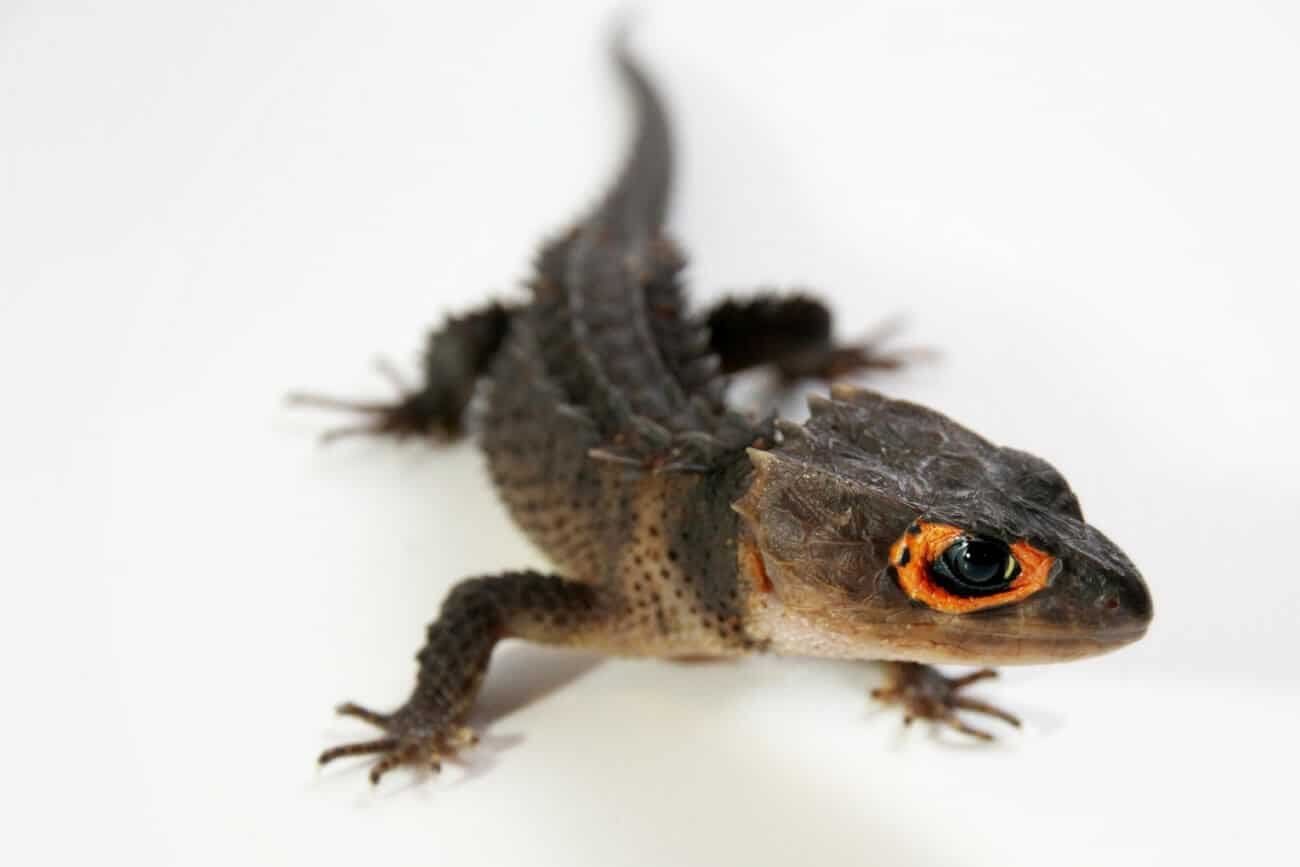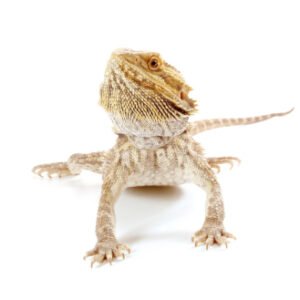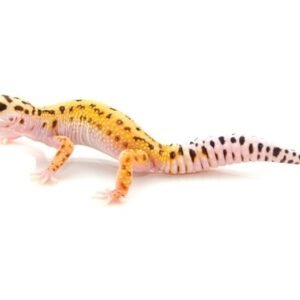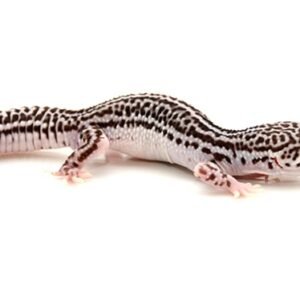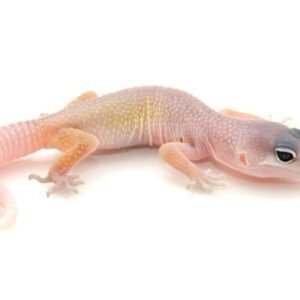The Fascinating Red-Eyed Crocodile Skink: A Unique Pet and Fascinating Creature
Introduction to the Red-Eyed Crocodile Skink
The red-eyed crocodile skink, scientifically known as Tribolonotus novaeguineae, is a fascinating species that belongs to the Scincidae family. These unique reptiles are primarily found in the dense rainforests of New Guinea, where they thrive in humid environments, often residing in leaf litter and among fallen logs. Their natural habitat plays a critical role in their lifestyle, as moisture-rich surroundings contribute to their health and longevity.
One of the most distinctive features of the red-eyed crocodile skink is undoubtedly its vibrant red eyes, which stand in stark contrast to its textured, dark brown skin. The skin itself has a unique appearance; it is scaly and resembles that of a crocodile, leading to the skink’s captivating name. This reptile possesses an array of physical traits that help it camouflage within its natural habitat, ensuring protection from predators. In terms of size, adult red-eyed crocodile skinks typically measure around 12 to 14 inches in length, making them relatively small compared to other lizards.
Beyond their striking appearance, red-eyed crocodile skinks are also known for their docile temperament, which has increased their popularity as exotic pets in recent years. Unlike some other lizard species, these skinks are not prone to aggression and can adapt well to captivity with proper care. This adaptability, combined with their captivating look, makes the red-eyed crocodile skink an appealing choice for reptile enthusiasts seeking to add a unique species to their collection. Understanding the origins, habitat, and characteristics of this remarkable creature sets the foundation for appreciating why it captivates both wildlife lovers and pet owners alike.
Habitat and Behavior
The red-eyed crocodile skink (Tribolonotus gracilis) is a captivating reptile native to the lush rainforests of New Guinea and the surrounding islands. These unique creatures thrive in environments characterized by high humidity and abundant vegetation. Their natural habitat consists primarily of dense undergrowth and leaf litter, which provide ample cover for both protection and foraging opportunities. The skink’s distinct morphological features, including robust bodies and striking red eyes, aid in their camouflage amidst the forest debris, rendering them less visible to potential predators.
In terms of behavior, the red-eyed crocodile skink is primarily diurnal, displaying activity during daylight hours. This behavior allows them to forage for food, which typically includes a diet of insects and small invertebrates. As social animals, these skinks often engage in various interactions with each other, including subtle displays of dominance or territoriality, especially during the breeding season. Their keen sense of sight and olfactory senses play crucial roles in both social interactions and the identification of food sources.
The ecological role of red-eyed crocodile skinks is significant as they contribute to the control of insect populations within their habitat. As foragers, they help maintain the balance of the ecosystem, highlighting the interconnectedness of their environment. The habitats they occupy also reflect their behavioral needs, as the humidity and temperature play pivotal roles in their overall health and well-being. Understanding these behaviors and habitat requirements is essential for replicating their natural conditions in captivity, which can enhance their care as pets. Recognizing their social nature and dietary preferences will further enable enthusiasts to provide a suitable living environment that promotes the red-eyed crocodile skink’s health and longevity.
Caring for a Red-Eyed Crocodile Skink as a Pet
Owning a red-eyed crocodile skink can be an immensely rewarding experience, but it requires careful consideration and proper care to ensure the health and happiness of these unique reptiles. The first step in providing adequate care is to establish a suitable habitat. These skinks thrive in a terrarium that mimics their natural environment. A tank of at least 20 gallons is recommended, featuring secure lid options to prevent escape. The terrarium should include a substrate such as coconut fiber or moss, which retains humidity and allows for burrowing, reflecting their natural habitat.
Temperature and humidity are critical for the well-being of red-eyed crocodile skinks. The ideal temperature range for their enclosure is between 75°F to 85°F (24°C to 29°C) during the day, while nighttime temperatures can drop slightly, but should not fall below 70°F (21°C). To maintain the necessary humidity levels, a range of 60% to 80% is ideal. Regular misting of the enclosure and the inclusion of a water dish can help achieve this. Installing a heat lamp or under-tank heater can help create a warm area for basking.
Feeding these reptiles involves a varied diet consisting mainly of insects like crickets, mealworms, and roaches. Adult skinks may also appreciate the addition of plant matter, but protein should remain the primary component of their diet. It is crucial to dust their food with a calcium supplement to ensure proper bone health. Socialization is another important aspect of care; while red-eyed crocodile skinks can be somewhat shy, gentle handling can help them become accustomed to human interaction. It’s essential to observe their behavior and respect their boundaries to foster a trusting relationship.
Finally, be aware of potential health issues, such as respiratory infections or skin problems. Regular veterinary check-ups can help monitor their health, and any signs of stress or illness should be addressed promptly. By investing time and effort into understanding and providing for the needs of your red-eyed crocodile skink, you will create a nurturing environment that leads to a fulfilling companionship with this extraordinary creature.
Conservation and Awareness
The red-eyed crocodile skink (Tribolonotus gracilis) has captured the hearts of reptile enthusiasts and pet owners alike with its striking appearance and unique characteristics. However, despite being a captivating pet, this species is facing several conservation challenges that threaten its survival in the wild. Currently, red-eyed crocodile skinks are listed as near threatened due to habitat destruction and a burgeoning pet trade that often exploits them. Their natural habitats, primarily tropical forests in New Guinea and surrounding islands, are increasingly compromised by logging, agriculture, and urban development. This loss of habitat diminishes their populations and poses a significant risk to their long-term viability.
Moreover, the pet trade often leads to over-collection, which can deplete wild populations faster than they can replenish. It is essential for potential pet owners to understand the implications of acquiring a red-eyed crocodile skink from questionable sources, as it may contribute to their decline in the wild. Responsible sourcing of these reptiles is paramount, and enthusiasts should seek out reputable breeders or specialized pet shops committed to conservation practices.
To make a positive impact on the conservation of the red-eyed crocodile skink and similar species, individuals can support wildlife conservation organizations and initiatives that promote habitat preservation and responsible pet ownership. Educating oneself about the ecological importance of these reptiles can foster greater appreciation and awareness, which are crucial for their conservation. By advocating for ethical sourcing and supporting legislation aimed at protecting their natural habitats, we can contribute to a sustainable future for the red-eyed crocodile skink and ensure that this remarkable species continues to thrive in its native environment.

